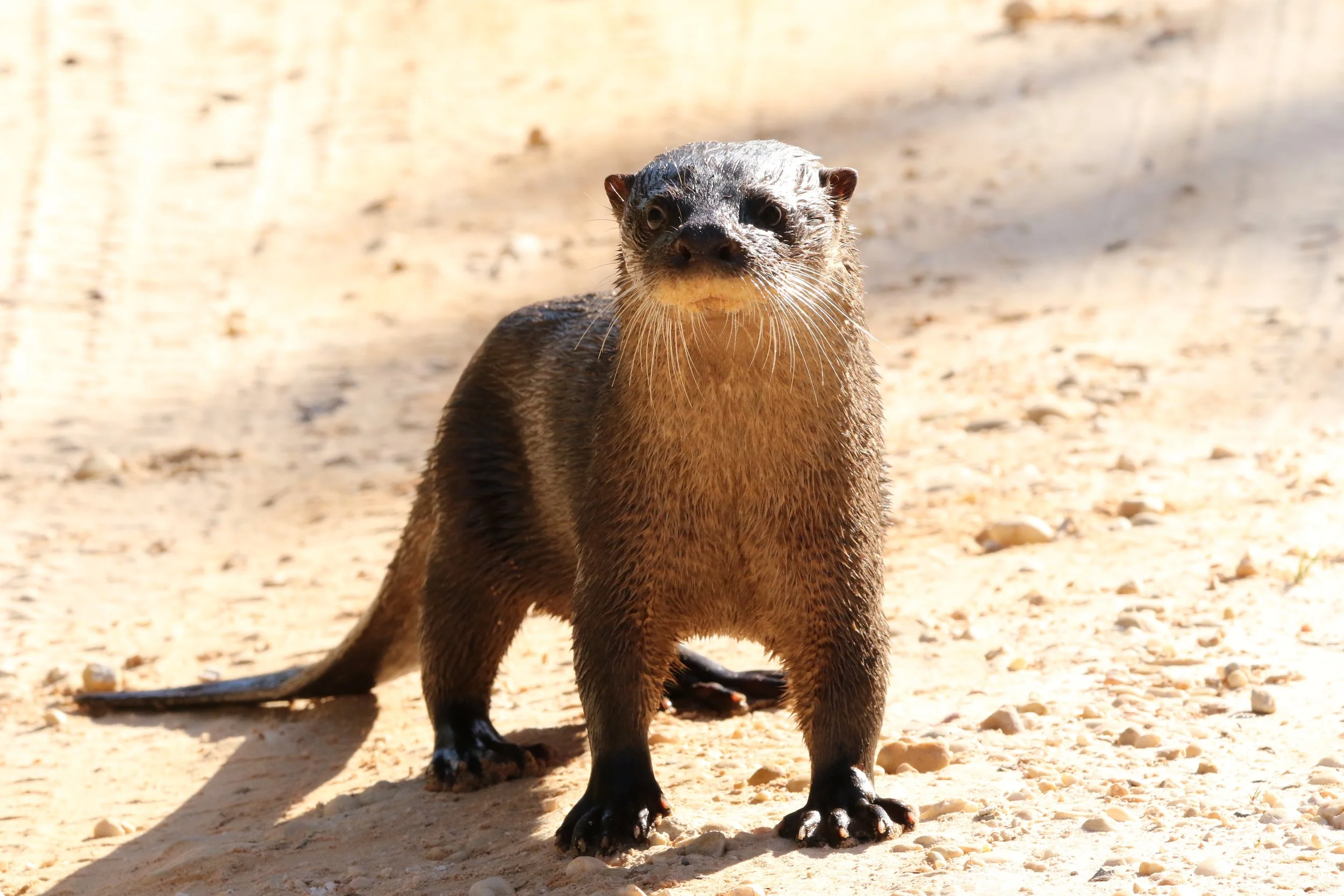Neotropical Otter (Lontra longicaudis)

©Simone Durigon
QUICK GUIDE
SIZE - 1.2 metres
WEIGHT - 12kg
DIET - Fish (80%) - crabs, snakes, lizards, frogs, birds and mammals make up the rest
GESTATION - 2 months
HABITAT - Mostly swamp forests
THREAT TO SPECIES - Habitat destruction and water pollution
CONSERVATION STATUS - Near Threatened
The Neotropical Otter (Lontra longicaudis) can reach up to 1.2m in length and can weigh up to 12 kg as an adult. Its long and almost cylindrical tail, and small feet, are two of its more distinguishing features. The Neotropical Otter can be found from southern Colombia, below the Andes, which provides a natural barrier between them and the newly found species, the Mesoamerican otter, all the way down to Argentina, however they are not found in Chile.
©Alan Dahl
©Vincent Lo
The Neotropical Otter lives in a variety of habitats, and can be found as high as 3000m in altitude! From small forest streams and lakes, marshes and coastal savannah swamps, there are many different places these otters will call home, and they have also been reported to live in irrigation ditches among rice and sugar cane in Guyana. Neotropical Otters prefer to build their holts on rocky shores, or in areas of deep vegetation along small rivers. Breeding for this species usually takes place in the spring, however in some countries, such as Brazil, it can be all year round. A mother will give birth to between one and six cubs, but the mortality rate is high so sadly, not many will reach adulthood.
© Philip Perry
This species will feed mainly on fish and crabs. This diet can however, be quite variable, as Neotropical Otters are opportunistic carnivores that will also take amphibians, reptiles, small birds or mammals. Their diet can also depend on where they are found, with certain populations favouring prey species such as shrimp in the Biological Reserve of Tirimbina, Costa Rica, and aquatic birds in Rio Yaqui, Mexico. With the range of this otter species being so large, the favoured activity times vary, depending on how close they are to areas of human disturbance. If they do happen to inhabit an area closer to humans, they tend to be more nocturnal, in an effort to avoid contact.
© Reserva Ecológica Costanera Sur
With regards to the Neotropical Otter and its relationship with humans, this otter species is yet another which has suffered from severe hunting throughout its range and is verging on extinction in many areas. Currently classed as Near Threatened on the IUCN Red List, the Neotropical Otter’s widespread distribution in South America does not tell the whole story, as they are far from common. The findings for their range and population are based on sparse data, and in some areas the populations are extremely vulnerable. Habitat destruction and water pollution are other issues that the Neotropical Otter currently faces.




